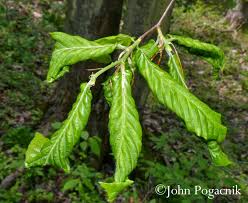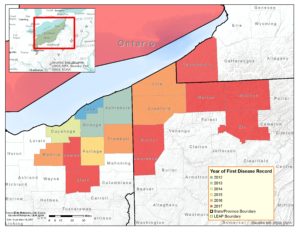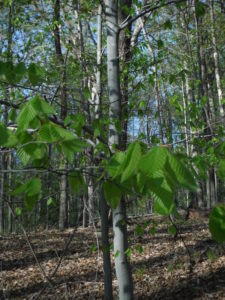mountain goats – introduced onto USFS-managed lands in the Columbia River Gorge at state initiative; in Utah, the state introduced mountain goats on lands adjacent to a USFS Research Natural Area
The journal Environmental Law has just published a 135-page article that debunks a common myth of wildlife management – a piece that the U.S. Forest Service tried to quash. The authors’ analysis could affect the introduction of potentially invasive non-native species – and the reintroduction of native ones – on federal lands.
Nie, M., C. Barns, J. Haber, J. Joly, K. Pitt & S. Zellmer. 2017. Fish and Wildlife Management on Federal Lands; debunking state supremacy. Environmental Law, Vol. 47, no. 4 (2017).
The article reviews the legal authority of federal and state governments to manage wildlife on federal lands. The authors examined wildlife-related provisions within the National Park System, National Wildlife Refuge System, National Forest System, Bureau of Land Management, the special case of Alaska, the National Wilderness Preservation System, and the Endangered Species Act. They also reviewed cases where federal and state agencies came into conflict over wildlife management on federal lands.
Citing the U.S. Constitution, federal land laws, and relevant case law, the authors assert that federal agencies have an obligation, not just the discretion, to manage and conserve fish and wildlife on lands and waters under their management. They say that the often-cited statement that “the states manage wildlife and federal land agencies only manage wildlife habitat” is wrong from a legal standpoint. This is the myth that the article debunks.
Furthermore, the authors find that federal agencies frequently apply their powers in an inconsistent and sometimes even unlawful fashion. Due to political pressures, they may back down when confronted by states wanting to manage wildlife to achieve their own goals – even when the state’s goals conflict with the legally-mandated purposes of the federal land under question. Such goals might include ensuring maximum populations of “game” animals or introduction of species to new habitats – regardless of the potential impact on native plants and animals.
The authors note that federal land and wildlife laws provide ample opportunities for constructive intergovernmental cooperation in wildlife management. They call for truly mutual collaboration by federal, state, and tribal authorities in managing wildlife. However, such cooperation is blocked in part by states choosing to challenge the constitutional powers, federal land laws, and U.S. government supremacy. In addition, the authors contend, most states have not put together programs that address their own conservation obligations. These obligations are inherent in the widely recognized doctrine of wildlife being a public trust to be managed for the present and future benefit of the people, not the government or private individuals.
According to the website of the Forest Service Employees for Environmental Ethics, posting of a draft of this article on the University of Montana website (where lead author Martin Nie teaches) led the U.S. Forest Service to pressure the university to withdraw the article. The university refused, and the Forest Service ended its contract with Nie and his research center.
The paper can be downloaded here. We welcome comments that supplement or correct factual information, suggest new approaches, or promote thoughtful consideration. We post comments that disagree with us — but not those we judge to be not civil or inflammatory.
Posted by Faith Campbell




